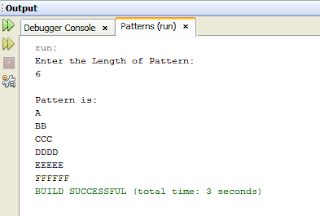Following Code will create Our National Flag("Tiranga") using Java Applet
Code::
import java.applet.*;
import java.awt.*;
public class Republic extends Applet
{
public void paint(Graphics fl)
{ Color c1=new Color(255,140,0); //saffron color
Color c2=new Color(139,0,0); // dark red color
//for pole
fl.setColor(c2);
fl.fillRect(250,100,5,400);
fl.setColor(Color.black);
fl.drawRect(250,100,5,400);
//for saffron
fl.setColor(c1);
fl.fillRect(255,102,180,40);
fl.setColor(Color.black);
fl.drawRect(255,102,180,40);
//for white
fl.setColor(Color.WHITE);
fl.fillRect(255,142,180,40);
fl.setColor(Color.black);
fl.drawRect(255,142,180,40);
//for green
fl.setColor(Color.GREEN);
fl.fillRect(255,182,180,40);
fl.setColor(Color.black);
fl.drawRect(255,182,180,40);
// for background
Color c4= new Color(173,216,230);
setBackground(c4);
// for stairs
int j[]={250,245,245,225,225,280,280,260,260,255};
int k[]={500,500,505,505,515,515,505,505,500,500};
fl.setColor(c2);
fl.fillPolygon(j,k,10);
fl.setColor(Color.BLACK);
fl.drawPolygon(j,k,10);
// for ashok chakra
fl.setColor(Color.blue);
fl.drawOval(325,142,39,39);
// for lines in ashok chakra
int n1=345;
int d1=162;
double n2,d2;
double angle= 0.0; //for angle determination
double line=0.0;
int r=20;
for(int i=1;i<=24;i++)
{
angle=(double)line*(3.14/180);
n2=n1+(double)r*Math.cos(angle);
d2=d1+(double)r*Math.sin(angle);
fl.drawLine(n1,d1,(int)n2,(int)d2); //drawing line between (n1,d1) and (n2,d2)
line=line+(360/24);
}
// for text
Font f=new Font("Arial",Font.BOLD,36);
fl.setFont(f);
Color c3=new Color(0,100,0);
fl.setColor(c3);
fl.drawString("Happy Republic Day",240,595);
}
}
Output:
Happy Republic Day To All !!!
Code::
import java.applet.*;
import java.awt.*;
public class Republic extends Applet
{
public void paint(Graphics fl)
{ Color c1=new Color(255,140,0); //saffron color
Color c2=new Color(139,0,0); // dark red color
//for pole
fl.setColor(c2);
fl.fillRect(250,100,5,400);
fl.setColor(Color.black);
fl.drawRect(250,100,5,400);
//for saffron
fl.setColor(c1);
fl.fillRect(255,102,180,40);
fl.setColor(Color.black);
fl.drawRect(255,102,180,40);
//for white
fl.setColor(Color.WHITE);
fl.fillRect(255,142,180,40);
fl.setColor(Color.black);
fl.drawRect(255,142,180,40);
//for green
fl.setColor(Color.GREEN);
fl.fillRect(255,182,180,40);
fl.setColor(Color.black);
fl.drawRect(255,182,180,40);
// for background
Color c4= new Color(173,216,230);
setBackground(c4);
// for stairs
int j[]={250,245,245,225,225,280,280,260,260,255};
int k[]={500,500,505,505,515,515,505,505,500,500};
fl.setColor(c2);
fl.fillPolygon(j,k,10);
fl.setColor(Color.BLACK);
fl.drawPolygon(j,k,10);
// for ashok chakra
fl.setColor(Color.blue);
fl.drawOval(325,142,39,39);
// for lines in ashok chakra
int n1=345;
int d1=162;
double n2,d2;
double angle= 0.0; //for angle determination
double line=0.0;
int r=20;
for(int i=1;i<=24;i++)
{
angle=(double)line*(3.14/180);
n2=n1+(double)r*Math.cos(angle);
d2=d1+(double)r*Math.sin(angle);
fl.drawLine(n1,d1,(int)n2,(int)d2); //drawing line between (n1,d1) and (n2,d2)
line=line+(360/24);
}
// for text
Font f=new Font("Arial",Font.BOLD,36);
fl.setFont(f);
Color c3=new Color(0,100,0);
fl.setColor(c3);
fl.drawString("Happy Republic Day",240,595);
}
}
Output:
Happy Republic Day To All !!!

